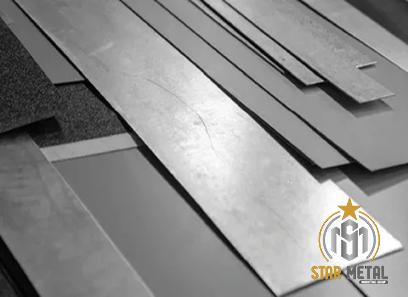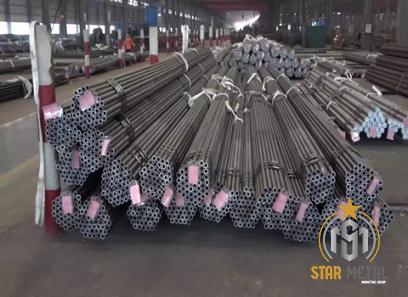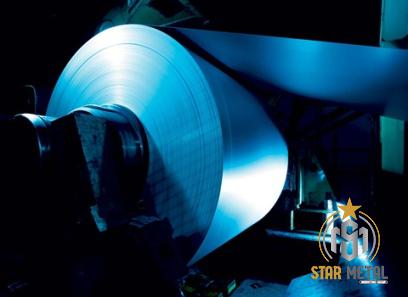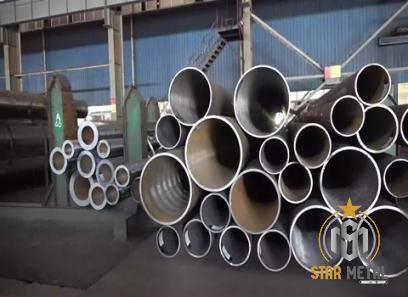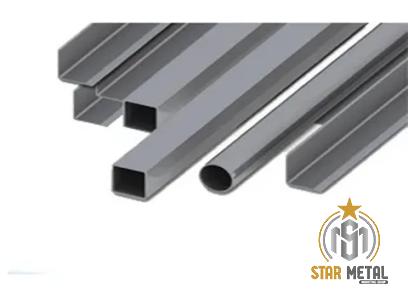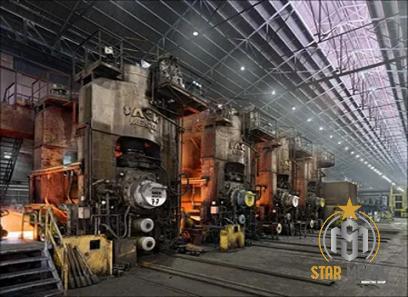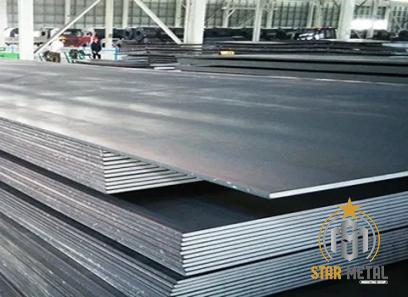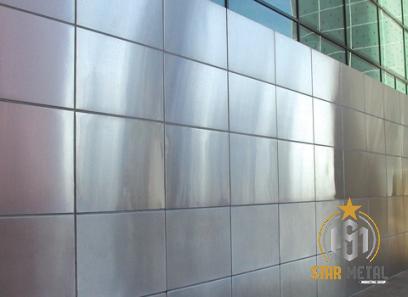Galvanized sheet comes in a roll and its price is actually per ton but of all the countries around the world, the price of companies in Asia is lower than in other places because of the advantages they have.
galvanized sheet metal
Steel and iron sheets used in various industrial applications and constructions have weaknesses, one of the biggest weaknesses being their threat to moisture. Typically, steel and iron rust and weaken and collapse over time if exposed to moisture. Therefore, industry experts have been looking for ways to counter this huge threat and protect the performance of steel and have found an effective way to solve this problem.  Simply put, galvanized iron is iron that is coated with a layer of zinc to protect it from rusting near moisture, and even if the coating cracks, the base metal will still prevent rust. The most economical method of galvanizing is to immerse the iron plate in an iron bath. The amount of coating or zinc placed on both sides of the plate is called coating and is measured in grams per square meter. In this way, the secondary coating will corrode over time while the original metal underneath is kept in a healthy shape. This process is called current protection. The magnitude of the coating resistance depends on its thickness. This method is one of the most common techniques for protecting steel and metals in corrosive environments. In factories, galvanized products are usually produced and sold in both coil and fabric forms. How to remove rust? Must have seen the rust on the iron tools around us. Steel is one of the most widely used metals in the world today. Because they have many different functions. The strength of steel is of interest to manufacturers and craftsmen. But the particular problem with these popular metals is that they can rust if not properly coated during processing. This rust can cause a reddish-orange layer to form on the metal, destroying its effectiveness, so it is important to remove rusted steel tools. And depending on the name of the rusty part, this is done differently. What factors cause iron to rust? Iron is an element called Fe in Mendeleev’s table. The characteristic of this element is it readily reacts with moisture and oxygen, resulting in the production of rust or iron oxide. Rusting of iron is an oxidation reaction. Because iron ions separate. Of course, it is worth noting that oxygen alone will not cause iron to rust. In addition to this, moisture is also necessary. Factors such as: moisture, salt water, carbon dioxide and many acids can cause rust and cause it to develop. To prevent this from happening, iron or steel parts should be well protected against rust by various coatings.
Simply put, galvanized iron is iron that is coated with a layer of zinc to protect it from rusting near moisture, and even if the coating cracks, the base metal will still prevent rust. The most economical method of galvanizing is to immerse the iron plate in an iron bath. The amount of coating or zinc placed on both sides of the plate is called coating and is measured in grams per square meter. In this way, the secondary coating will corrode over time while the original metal underneath is kept in a healthy shape. This process is called current protection. The magnitude of the coating resistance depends on its thickness. This method is one of the most common techniques for protecting steel and metals in corrosive environments. In factories, galvanized products are usually produced and sold in both coil and fabric forms. How to remove rust? Must have seen the rust on the iron tools around us. Steel is one of the most widely used metals in the world today. Because they have many different functions. The strength of steel is of interest to manufacturers and craftsmen. But the particular problem with these popular metals is that they can rust if not properly coated during processing. This rust can cause a reddish-orange layer to form on the metal, destroying its effectiveness, so it is important to remove rusted steel tools. And depending on the name of the rusty part, this is done differently. What factors cause iron to rust? Iron is an element called Fe in Mendeleev’s table. The characteristic of this element is it readily reacts with moisture and oxygen, resulting in the production of rust or iron oxide. Rusting of iron is an oxidation reaction. Because iron ions separate. Of course, it is worth noting that oxygen alone will not cause iron to rust. In addition to this, moisture is also necessary. Factors such as: moisture, salt water, carbon dioxide and many acids can cause rust and cause it to develop. To prevent this from happening, iron or steel parts should be well protected against rust by various coatings.
For this, iron is alloyed or galvanized with various elements and a protective coating is used for insulation, so galvanized sheet is much more useful than other steel sheets. Disadvantages of rusting industrial tools and machinery: Rust is divided into destructive rust and permanent rust. Its stable type is actually a rust that forms a layer on the metal and prevents the underside of it from corroding. But its destructive type needs to be addressed quickly. Rust can cause iron equipment to fail, corrode and break. During the chemical reactions that cause iron to rust, the chemical composition of iron also changes, which can cause corrosion on the metal surface. If the rusted iron is not removed from the surface in time, it will eventually penetrate the lower layers and wear them down. Wear and tear causes various iron tools to fail at great loss when replaced. This is mainly found in very expensive industrial machines and is expensive to replace. An example of iron tools are gears, which stop their movement if rust penetrates them. The entire vehicle may become unusable. How to remove rust: Many practical and practical methods are used to remove rust. Remove rust from heavy and complex industrial tools by sand or push blasting, water jet, laser electrolysis, etc. One of the ways to protect iron is galvanizing, which covers the base metal with a layer of protective metal (usually zinc metal). In this case, the coating is corroded and the base metal is protected. The amount of electroplating resistance is equal to its thickness. It can be said that this method is one of the most economical ways to protect the iron. There are different methods for galvanizing iron and sheet metal, the best and most economical method is galvanizing. The dimensions of the zinc coating on iron and other steel profiles are different. This is determined by the quality of the zinc coating, which can vary from 100 to 350 grams per square meter. The use of galvanized sheets is mainly where the sheet is exposed to moisture and has the potential to corrode and rust. For example, these sheets are mainly used for covering pitched roofs, greenhouses, and exterior cladding of buildings. The galvanized color plate has many applications in the construction of sandbox plates and always affects the quality of the plate. 
Roll of galvanized sheet metal per ton
Steel and metal sheets can be classified into different types according to their use, material composition, and their appearance. The roll of the galvanized sheet is per ton and galvanized Including blackboard, oil board, color board, galvanized plate, steel plate, etc. In the metallurgical definition of a plate, a plate made of hot-rolled steel with a temperature above 930 degrees Celsius is called a black plate. Some metal sheets of specific and standard lengths and widths are factory-made and ready for marketing, called fabric sheets. The size of the cloth is accurate, the surface of the cloth is smooth (no wind), and there is no damage. For example, oiled cloth, galvanized cloth and steel are sold in two standard sizes, 2.5 x 1.25 m and 2 x 1 m. Black pieces of fabric over 3 mm thick and 6 x 1.5 m large and over 20 mm thick and 6 x 2 m large can be found on the market. Sheets produced in coil form have a specific and standard width, but they are not cut to length, they are wrapped in coils. In this way, consumers can cut the sheet to the desired length according to their needs. The coil can of course also be cut crosswise to the desired size, this cutting method is called roll-to-roll cutting. There are galvanized and oiled coils in standard widths of 1m and 2m, as well as tall black coils in widths of 1.5 and 2m. The history of the appearance of galvanized sheets: The history of using galvanized can be traced back to 1724. When a French chemist named Merouin at the Royal Academy of France described a method of coating iron with molten zinc. In 1836, Sorel, another French chemist, continued the problem. To cover the iron with zinc, he first washed it with sulfuric acid nine times. Finally, ammonium chloride flux is applied and placed in the melting pool until the first galvanized part is formed. Tin and galvanized sheets: In tin, the iron is coated with tin to carry out the reaction of galvanized iron. Because metallic iron is more reactive than tin, the regeneration potential of tin is greater than that of iron, in the tin as cathode, iron as an anode. Of course, if the tin coating cracks, iron corrosion will continue under this coating.
What is galvanized steel? The term steel is used to refer to ferrous alloys containing up to 1.5% carbon combined with other metals. The properties of the steel depending on the percentage of carbon in it, the heat treatment it has undergone, and the alloying metals in it. There are generally two ways for factories to produce galvanized sheets: 1- roll form 2- Substance 1- roll galvanized: Galvanized coils are produced in thicknesses from 18 percent to 6 mm, in two widths of 100 cm and 125 cm. The typical weight of a coil is between 5 and 7 tons, depending on the width or thickness of the coil and the manufacturing facility. 2- Galvanized cloth: Fabric galvanized sheet is produced in two forms: 2000×1000 mm fabric and 1250×2500 mm fabric. Galvanized sheet performance introduction: To know what is galvanized sheet, you need to know these characteristics:
- Width: 1000 and 1250
- Coating: 100-120-180-220-275
- Thickness: 0.18-0.40-0.90-2-6
- Roll weight: 3.5 to 12 tons
- Coil inner diameter: 570~620
- (chromate)
- (unoiled)
There are 10 advantages of using galvanized sheet, they are: 1- A cheap solution: Galvanizing will cost less than other common corrosion protection methods. 2- Reduce repair and maintenance costs: Although galvanizing is more expensive than other corrosion protection methods. It is highly recommended to implement it, as it does not require expensive repairs! 3-long life: The service life of galvanized sheet in a fully corrosive environment is about 20 to 30 years. 
galvanized sheet metal price
4 credits: The production of thin coatings is discussed in the various standards for galvanizing steel sheets. This shows that the life and performance of the zinc layer is reliable for consumers. 5- Durability of the coating: The coating formed by galvanizing has good resistance to mechanical damage, wear and corrosion due to its special metallurgical structure. 6- Automatic protection against environmental damage: The galvanized coating penetrates the steel and acts as a cathode. Therefore, it will be able to protect a small part of the steel surface against environmental damage and corrosion. 7- Total protection: The coating formed can fill all points and surfaces of the steel, including corners, small places and recesses, and prevent them from corroding. In this area, no coating is more effective than galvanized coating. 8- Easy to control: Galvanized coatings can be easily checked and inspected without any destructive testing, only by eye (destructive testing is required in special cases where it is necessary to guarantee quality control). 9- Achieve goals in a short time: If the galvanized sheet is required on-site, there is no need to spend time on surface treatment, painting, or inspection. 10- Complete protection: The galvanizing process is not dependent on weather conditions. Galvanized sheet production: To explain what is galvanized sheet is, our team has prepared the following materials about the galvanized sheet. In general, there are two ways to produce galvanized sheets from cut sheets or plates. See more information about one-mile boards and board prices on the discount sheet page.
a) Cold galvanized plate: The cold galvanized plate is produced by an electrolytic method and electric current, and the “zinc” metal covers the desired plate. b) Hot-dip galvanized sheet: Thermal is the process of dipping a part into molten “zinc”, a coating of pure zinc or a zinc-iron alloy that is metallurgically bonded to the base metal (iron). Currently, this process is carried out in two ways:
- More galvanized
In a wet plate, a “zinc” ammonium chloride mixture is sprinkled on the surface of the melt, and the part goes directly into the melt after the preparation step, while dipping into the flux.
- Dry galvanization
In dry, after the preparation step, the parts are placed in a “zinc” ammonium chloride solution, after soaking, they are placed in a desiccator and then in the melt. Dip Galvanizing Process: 1- (defatted) A hot soda bath (about 90 degrees Celsius) or a special degreasing compound is usually used in the first stop of the electroplating process to clean the surface of the part from paint, oil, grease and other organic compounds. Other compounds that contaminate the surface and are not removed in this step will be removed in the next step (acid wash). All surfaces of the part must be carefully checked to remove paint. Certain types of colors may not be easy to remove, which is necessary because this requires special mechanical operations, such as sandblasting. During this process, parts to be galvanized must remain suspended. If you want to find the best products in the shortest time, don’t forget to contact our experts. 



